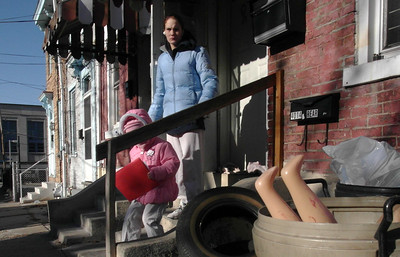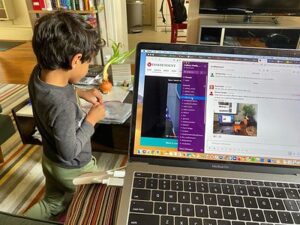New data from the Federal Reserve Bank of St. Louis show that childcare makes a measurable difference in the labor force participation rate for women with children under the age of 6. The data don’t show a measurable impact on labor force participation for men with children under 6.
The bulk of childcare responsibilities fall to women. This is a known phenomenon, so there’s no news there. Nationally, 40% of households are classified as two-income households. In Washtenaw County in 2023, about 46% of households were classified as having two married earners. While this is higher than the national average, nearly 25% of households both nationally and in Washtenaw County collected some form of retirement income. Retirement income is not considered “earned.”
Two-earner households where the earners are married are the most common type of household in the United States. Two-paycheck homes are a reality for many families with children, which means that childcare for these homes is a necessity. Lack of childcare keeps workers – virtually all of whom are women – out of the workforce. This has both short-term and long-term economic consequences.
In the short-term, fewer households can access the income they need while the children are under the age of 6. These households may have trouble receiving or retaining employment benefits like healthcare and dental insurance, paid sick time, and group life insurance. In the longer term, women whose work history is broken by periods in which they are out of the workforce may have a harder time rejoining the workforce, may have fewer relevant workforce skills, may need to retrain before returning to work, may earn less upon returning to the workforce, may accumulate less in retirement savings and will collect less in Social Security benefits upon retirement.
Lack of childcare keeps women out of office, school
It’s not a stretch to say that women with young children who are enrolled in school face the same childcare challenges. Absence of childcare means that these student parents are likely to encounter significant barriers to remaining enrolled long enough to graduate.
Unfortunately, there are no statistics on how many Washtenaw County student-parents couldn’t (or didn’t) enroll because WCC no longer offers childcare on campus. But in Washtenaw County, which has the highest childcare costs in the State of Michigan, lack of on-campus childcare is certainly a determining factor for young women with young children who would like to complete an educational program.
More unfortunate than the WCC Administration’s shortsighted decision to eliminate The Children’s Center is the fact that the Family Education Building, which housed the Children’s Center, has remained empty since 2021. There was no immediate need for the building, and there has been no action taken to rehabilitate the building, as the Administration initially proposed after closing the childcare program. In other words, the administration pulled the plug on the childcare program for no good reason and to the detriment of student parents throughout the county.
Under these circumstances, exactly how has Washtenaw County benefited from this outrageous decision?
Photo Credit: Mark Knobil , via Flickr





















